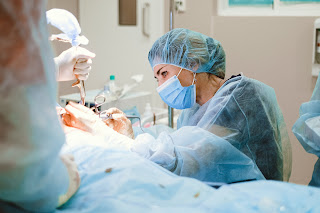The field of medical technology has witnessed remarkable advancements in recent years, and one of the most groundbreaking developments is the creation of 3D printed hearts. This innovation holds the promise of transforming the landscape of cardiac care, offering new hope to millions of people suffering from heart conditions worldwide. In this article, we will explore the fascinating world of 3D printed hearts, delving into the technology behind them, their potential applications, and the impact they are poised to make on the future of healthcare.
1. The Technology Behind 3D Printed Hearts
The concept of 3D printing has taken the world by storm, finding applications in various industries, including healthcare. When it comes to 3D printed hearts, the process begins with medical imaging, usually in the form of MRI or CT scans. These scans provide detailed, 3D images of the patient's heart, capturing its intricate structure and any abnormalities.
Once the scans are obtained, specialized software converts this data into a digital 3D model, allowing healthcare professionals to manipulate and analyze it. This step is crucial in customizing the 3D printed heart to the patient's specific needs.
The actual printing process involves layer-by-layer deposition of biocompatible materials, such as hydrogels or bioinks, that mimic the consistency and texture of human tissue. Some 3D printers can even deposit living cells alongside these materials, creating a functional, bioengineered heart. These cells can develop into muscle tissue and blood vessels, enhancing the heart's overall functionality.
2. The Promise of Personalized Medicine
One of the most significant advantages of 3D printed hearts is their potential to revolutionize personalized medicine. Every individual's heart is unique, and traditional cardiac treatments often involve a one-size-fits-all approach. With 3D printing, healthcare professionals can tailor heart implants and prosthetics to match the patient's precise anatomical specifications.
This level of personalization minimizes the risk of complications, such as rejection or implant migration, which are common issues in traditional cardiac surgeries. Patients can receive treatments that are specifically designed for their bodies, leading to better outcomes and improved quality of life.
3. Advancing Cardiac Research and Education
3D printed hearts also have a profound impact on medical research and education. Medical students and professionals can benefit from realistic, tangible models of the human heart, enhancing their understanding of cardiac anatomy and pathology. These models provide invaluable opportunities for training, surgical planning, and experimentation.
Moreover, researchers can use 3D printed hearts to study various heart conditions and develop innovative treatments. By creating accurate replicas of diseased hearts, scientists can test new drugs, devices, and surgical techniques, accelerating progress in the field of cardiology.
4. Bridging the Gap with Organ Transplants
The shortage of viable donor organs remains a significant challenge in healthcare. Many patients in need of heart transplants face long waiting lists, and sadly, not all of them receive the life-saving organs they require. 3D printed hearts hold the potential to bridge this gap by providing a renewable source of organs for transplantation.
Scientists are working tirelessly to develop fully functional 3D printed hearts that can replace damaged or failing organs. Although this technology is still in its early stages, it offers hope for a future where patients in need can receive a custom-made, biocompatible heart on-demand, greatly reducing the wait time and risk associated with traditional organ transplantation.
5. Overcoming Challenges and Ethical Considerations
While the prospects of 3D printed hearts are undeniably exciting, there are several challenges and ethical considerations that must be addressed. For instance, ensuring the long-term safety and reliability of 3D printed hearts remains a concern. These bioprinted organs must withstand the rigors of the human circulatory system and function optimally for years, if not decades.
Additionally, there are ethical concerns surrounding the use of living cells in the printing process. Questions about consent, ownership, and the potential for the creation of "designer" organs require thoughtful consideration and regulation.
6. The Road Ahead: A Heartfelt Revolution
As we look to the future, it is clear that 3D printed hearts hold immense promise in reshaping cardiac care. From personalized treatments and enhanced medical education to the potential for organ transplantation breakthroughs, this technology offers a ray of hope for patients and healthcare professionals alike.
However, realizing this potential requires continued research, development, and ethical guidelines to ensure the responsible and safe integration of 3D printed hearts into clinical practice. As scientists and healthcare providers work together, we may one day witness a world where heart disease is no longer a leading cause of death, thanks to the remarkable innovation of 3D printed hearts.



.jpg)


No comments:
Post a Comment